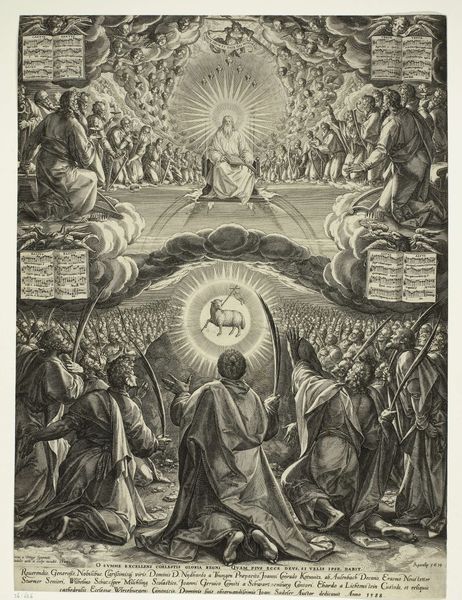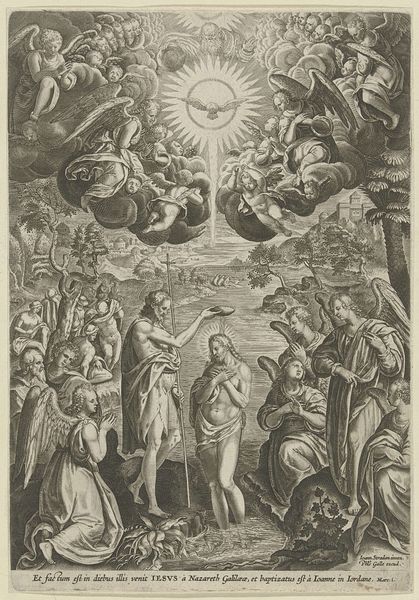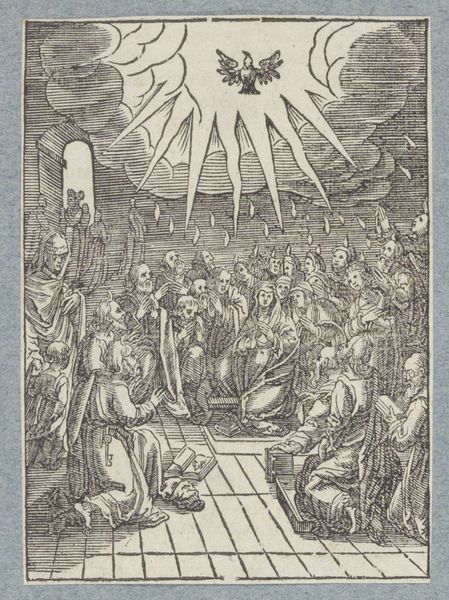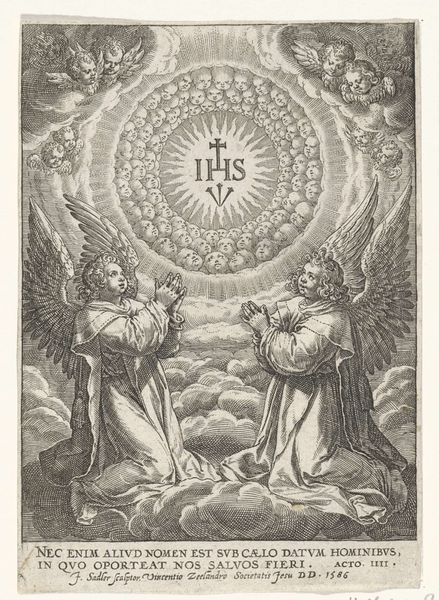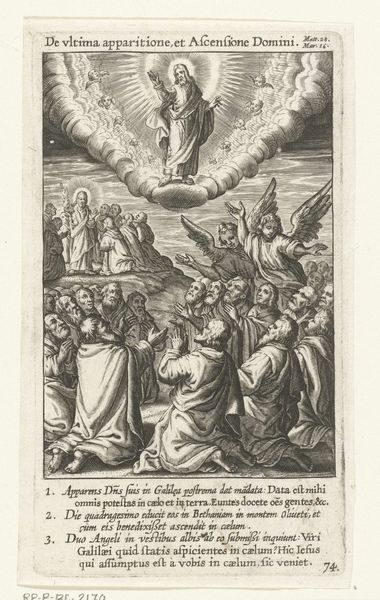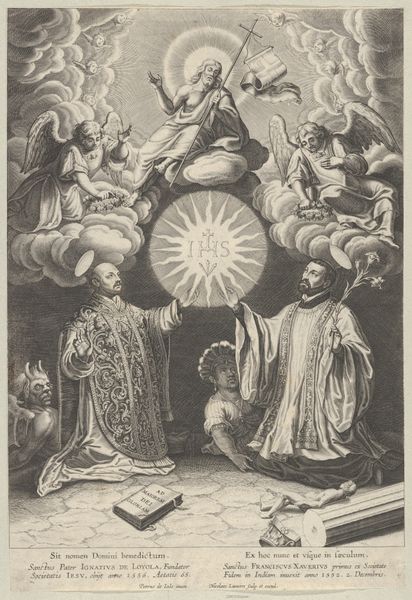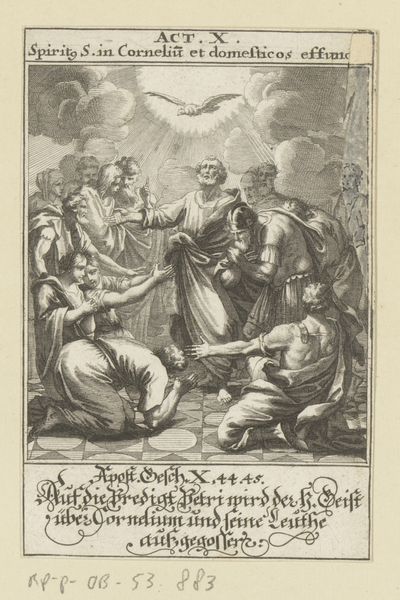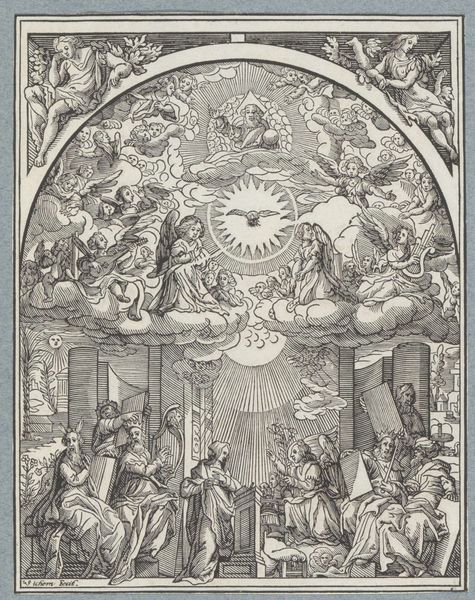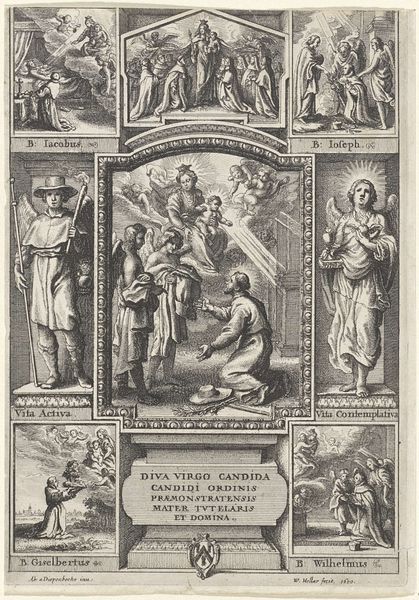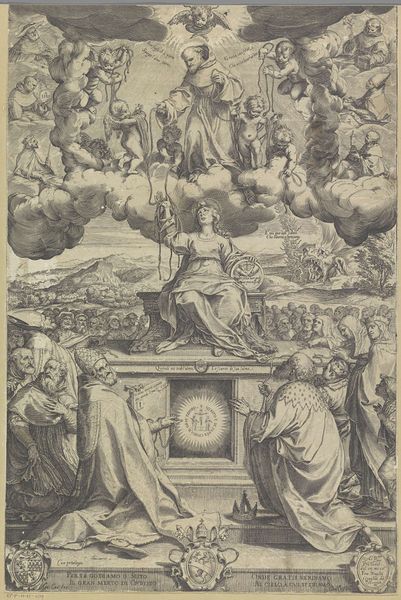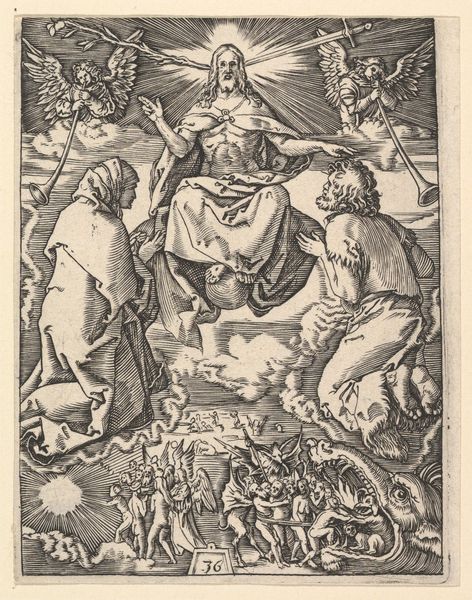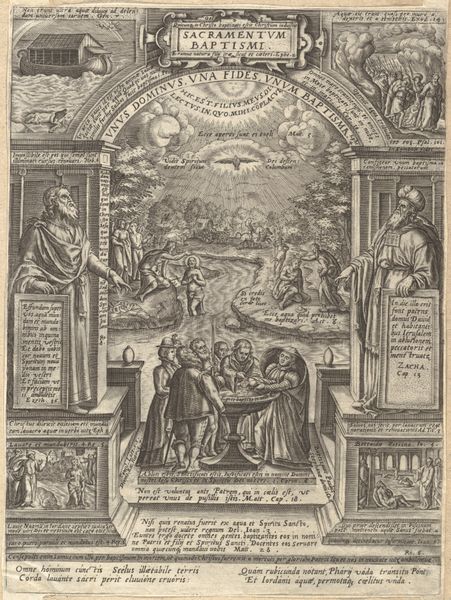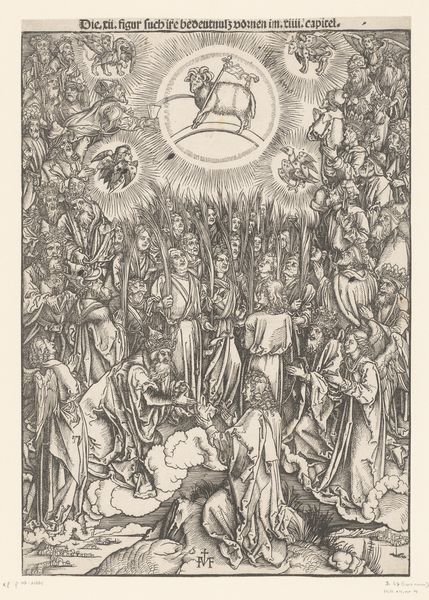
Dimensions: height 288 mm, width 240 mm
Copyright: Rijks Museum: Open Domain
This print, "Adoration of the Monogram of Christ" was made by Johann Sadeler I, sometime before his death in 1601. He was a master of engraving, a process that requires immense skill and patience. Sadeler would have used a sharp tool called a burin to carve lines into a copper plate. These lines hold ink, which is then transferred to paper under high pressure. Look closely, and you'll see how the varying density of lines creates a range of tones, from the bright light emanating from the monogram to the deep shadows of the figures' robes. The making of a print like this was a commercial enterprise, involving not just the artist but also publishers and distributors. Prints were a way to disseminate images and ideas widely, contributing to cultural exchange and the spread of religious and political messages. The very act of engraving, a painstaking and repetitive process, reflects the broader social and economic forces at play in Sadeler's time. Considering the materials, the making, and the context opens up a richer understanding of this intricate image.
Comments
No comments
Be the first to comment and join the conversation on the ultimate creative platform.
